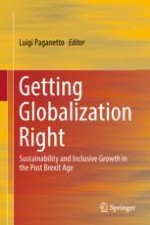2018 | OriginalPaper | Chapter
The Dutch Disease in Reverse: Iceland’s Natural Experiment
Authors : Thorvaldur Gylfason, Gylfi Zoega
Published in: Getting Globalization Right
Publisher: Springer International Publishing
Activate our intelligent search to find suitable subject content or patents.
Select sections of text to find matching patents with Artificial Intelligence. powered by
Select sections of text to find additional relevant content using AI-assisted search. powered by
